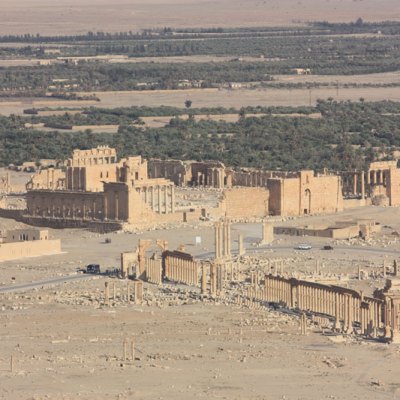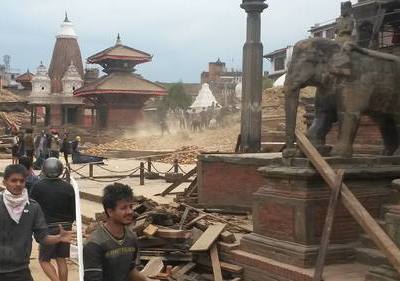From the April issue of Apollo: preview and subscribe here
Few people could have imagined, after the trail of destruction to Iraqi cultural heritage following the Second Gulf War in 2003, including the looting of the Iraq Museum, the desecration of Babylon, and the pillaging of archaeological sites, that things would have got even worse. But that is what has happened. Since Islamic fundamentalists (variously known as Isis, Isil, IS or Daesh) overran Mosul on 10 June 2014, they have not only introduced a reign of political terror but, in the name of religion, have cut a swathe of destruction through the unique and irreplaceable cultural heritage of northern Iraq. In Mosul itself, many famous mosques and shrines have been obliterated, apparently on the grounds that they commemorate saints and other notable figures, which is anathema to the fundamentalist interpretation of Sunni Islam espoused by Isis, and there has been vandalism of libraries.
One particularly shocking episode that fleetingly grabbed the attention of the world’s press was the smashing of statues and stone reliefs in the Mosul Museum, shown in a video posted online in late February this year. Fortunately most of the small objects in the collection of Mosul Museum had been removed to Baghdad for safekeeping before the Second Gulf War, but a number of stone sculptures, impractical to move, remained in the exhibition galleries. It is these that were targeted by the zealots. The video footage included harrowing images of thugs wielding sledgehammers and throwing statues to the floor. Those that did not shatter on impact were speedily broken up with the hammers. Most of the pieces were either Assyrian, dating from the 9th–7th centuries BC or from the caravan city of Hatra and dating from the 1st–3rd centuries AD. It was widely reported at the time that many of the pieces were plaster casts or copies, but this is not true. Of more than 50 sculptures in the museum only half a dozen were casts. It is feared that practically all the pieces have been destroyed, which, if true, represents a tragic loss for future generations of visitors to the Mosul Museum.
The same video shows fanatics attacking Assyrian human-headed winged bulls in the Nergal Gate at Nineveh. These colossal stone gateway figures, iconic symbols of the Assyrian empire, were discovered by the English archaeologist Austen Henry Layard in the middle of the 19th century, before being covered up again and re-excavated by Iraqi archaeologists about 15 years ago. They date from the time of King Sennacherib (r. 704–681 BC), and survived for nearly 3,000 years only to be broken up by power drills.
Similar winged bulls guarded entrances in the palace at Nimrud of the Assyrian king Ashurnasirpal II (r. 883–859 BC). On 5 March, archaeologists and art lovers around the world were stunned to hear that Isis was now intent on demolishing the ancient city and had arrived at Nimrud with bulldozers and heavy earth-moving equipment. Nimrud, some 20 miles south-east of Mosul, was a major capital of the Assyrian kingdom alongside Nineveh, and was by far the best- preserved site from that time. It is not yet a UNESCO World Heritage Site, but is on the Iraq Tentative List. The whole site within the city walls covers an area of 360 hectares, but the main public buildings were crowded on to a high mound in one corner of the city. Foremost among these was the palace of Ashurnasirpal, measuring some 200m x 130m; many of the most important rooms were lined with carved stone panels extolling the glories of the Assyrian king, whether seated in state, on military campaigns or hunting lions and bulls.
This palace was partially excavated by Layard, and many of the reliefs were subsequently removed to museums in Europe and the USA, but many were left behind, some of the highest quality. The result was the only place where it was possible to see an Assyrian palace with the reliefs still in position, and to get some inkling of how these vast, sprawling mud brick buildings would once have looked. Even though the upper parts of the walls and the roofs had long since gone, visiting the building was an evocative and memorable experience. It would be a tragedy if there is nothing left to visit. The destruction of the gateway figures and reliefs would be an appalling act of vandalism: as opposed to those reliefs which had been brought to Western museums, and scrubbed clean on arrival, some of those still in situ at the site bore traces of the original paint with which they were all once covered. Their destruction would be the loss of a unique resource.
Such artefacts are supposedly being destroyed because they are idolatrous, but there are many who doubt whether it is really religion that motivates these 21st-century barbarians and criminals. To suit their perverted ideology it seems they are attempting to eradicate all traces of former civilisations. Whatever the motivation, these acts of vandalism are an inexcusable assault on a cultural heritage that belongs to the whole world. This is particularly the case with the latest attack on the UNESCO World Heritage Site of Hatra. This caravan city in the desert west of Mosul boasts a series of magnificent temples dating from the 1st–3rd centuries AD, and is one of the most impressive sites of the ancient world. Let us hope that something of that grandeur remains.
Click here to buy the latest issue of Apollo
Related Articles
Editor’s Letter (April 2015): The cultural desecration of Iraq
Can Iraq’s Antiquities be Saved? Interview with Mark Altaweel


